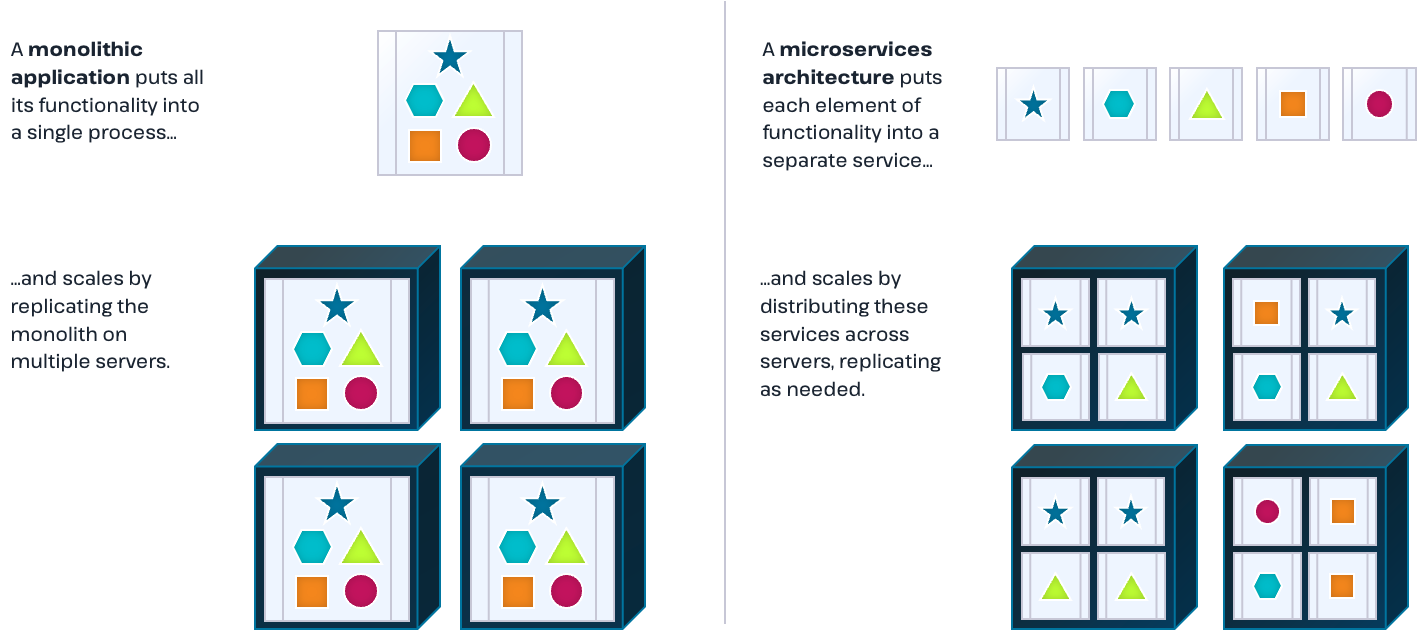3 Techniques to Boost Event-Driven Microservices Architectures
In the ever-changing world of software development, the event-driven microservices architecture has emerged as a game-changer for its ability to enhance agility, scalability, and development pace. Yet, beneath the silver lining of this modular approach lies a complex web of system interdependencies that, if not planned properly, can result in performance bottlenecks. But don’t be daunted by the journey of optimizing an event-driven microservices ecosystem for peak performance.
Let’s delve into three useful techniques that could redefine the benchmarks of your event-driven microservices architecture, offering not just an incremental uptick in efficiency, but a giant leap towards a future-ready infrastructure.
Revisiting Scalability through Smart-Size Microservices
Scalability has been a key advantage of microservices, allowing us to scale only those components that demand it without the bulk of the system getting bogged down. However, the art of scaling is nuanced. Often, the reflex is to scale out, adding more instances to meet burgeoning demand. But does each microservice need to be scaled in parallel, or can we be more discerning with our scaling resources?
Consider the concept of “smart-size microservices.” Assigning a specific level of scalability to each of your microservices, not strictly linear to their usage numbers, is an optimal move. This technique involves profiling the usage patterns and response time of each microservice, then crafting a strategic scaling strategy that aligns with the business demand. Think about it — why deplete resources into scaling a metrics dashboard microservice at the same level as your payment gateway, which handles a distinctly different volume and criticality of transactions?
This practice requires a more nuanced choreographed (or orchestration, if you are not going the event-driven route) layer that can dynamically adjust the scaling limits based on real-time analytics. It’s a sensical step toward squeezing the maximum performance from your microservices, just where you need it.

Embracing Event-Driven Architectures for Real-Time Responsiveness
Event-driven microservices are often the foundation of business reactivity, responding to requests as soon as they arrive. Many traditional microservices architectures are shackled to synchronous communication, which is fine for non-time-sensitive processing in data pipelines. Transitioning to an event-driven model can sever this binding using a choreographed approach to coordinating your microservices communications.
Event-driven architectures (EDAs) are tailored for real-time responsiveness. They ensure that your microservices are informed of significant events across the system and can act upon them instantly. This minimizes the need for repetitive request/response cycles, exponentially increasing efficiency.
The implementation of EDAs varies, but a common enabler is a robust message-broker layer, such as Apache Kafka or RabbitMQ, in conjunction with a distributed compute and/or stream processing technology like Hazelcast Platform, providing a reliable and scalable communication system. By decoupling producers from consumers and introducing temporal dependencies, EDAs can usher in the responsiveness that resonates across your system.
Note the Efficiency Drivers
Non-functional requirements (NFRs), often an afterthought in the software development life cycle, are the underlying factors in performance. These requirements define the operational aspects of a system—availability, reliability, security, and maintainability. In a nutshell, they are the quiet contributors to your system’s efficiency and resilience.
While understandably exciting, a myopic focus on delivering features can inadvertently compromise the delivery of a performant system. Design decisions isolated from non-functional considerations tend to rattle the system at its core. Ensuring that your microservices ecosystem adheres to NFRs from the get-go is no longer optional—it’s imperative.
This involves a rigorous assessment of the underlying infrastructure, code complexity, database queries, and external dependencies to meet the NFR benchmarks. The payoff is substantial; a system architected with NFRs in mind requires less nurturing in production, resulting in a more robust, cost-effective microservices ecosystem. Interestingly, these requirements are often more easily addressed by choosing the most appropriate technologies for your environment. This might ultimately be more cost-effective than spending a significant amount of time refactoring your existing systems to meet your needs. Hazelcast Platform provides availability, reliability, security, and maintainability to ensure you spend more time on business value and less on addressing the NFRs.
Implementation Maps – Forging Your Path to Performance
Embracing these techniques is not a one-size-fits-all prescription. The journey towards an optimized event-driven microservices architecture is a labyrinth, unique to every organization. For some, revising scalability might be the catalyst, leading to the subtle reshaping of your microservices. For others, it could be the seismic shift towards the real-time responsiveness of event-driven architectures.
In all likelihood, it will be a variety of approaches, intertwining to elevate the performance of your event-driven microservices architecture. Each technique brings with it inherent complexities and trade-offs, which, when navigated intelligently, can lead to efficiency levels that will resonate with your users and stakeholders alike.
In this era of digital dominion, your event-driven microservices ecosystem is more than a collection of software artifacts. It is your conduit to the future—a future where agility, scalability, and performance are not merely internal metrics, but the cornerstones of your competitive edge. As you chart your course and meticulously calibrate each component, remember that in a microservices architecture, every component can further your success.
The future of application development continues to be focused on microservices, with event-driven architectures as the pattern that delivers new advantages. Consider the techniques described above, and transform your event-driven microservices from a framework of potential into a powerhouse of efficiency and business value.
Learn more about event-driven microservices and Hazelcast Platform.



